Featured Comment:
“I’ve heard of this soup, but didn’t pay any attention to the ingredients. As it turns out, I’ve been eating it for the last couple of weeks! It’s very filling, no carbs needed. I will try the meatballs next time. Thanks for the recipe.”
– Feby
What is Chanko Nabe?
Chanko Nabe (ちゃんこ鍋) is a fascinating and culturally significant one-pot dish intimately linked with the world of Japanese sumo wrestling. The term “chanko” refers to the meals prepared and consumed by sumo wrestlers, which means that a variety of dishes, including curry rice and sukiyaki, can be considered “chanko” when prepared in a sumo stable.
The origins date back to the end of the Meiji era (1868-1912), around the time of the 19th yokozuna, Hitachiyama, at the Dewanoumi stable. The decision to make nabe dishes a central part of the wrestlers’ diet was driven by practical considerations.
With an influx of new recruits, the cost and effort of regular catering became too costly. Nabe dishes, which could be cooked in large quantities and did not require elaborate catering, became the staple. More importantly, Chanko Nabe provided an ideal nutritional balance to help wrestlers develop the physique necessary for sumo, leading to widespread adoption across different sumo stables.
Today, many retired sumo wrestlers have opened restaurants specializing in chanko-nabe, further popularizing this dish.
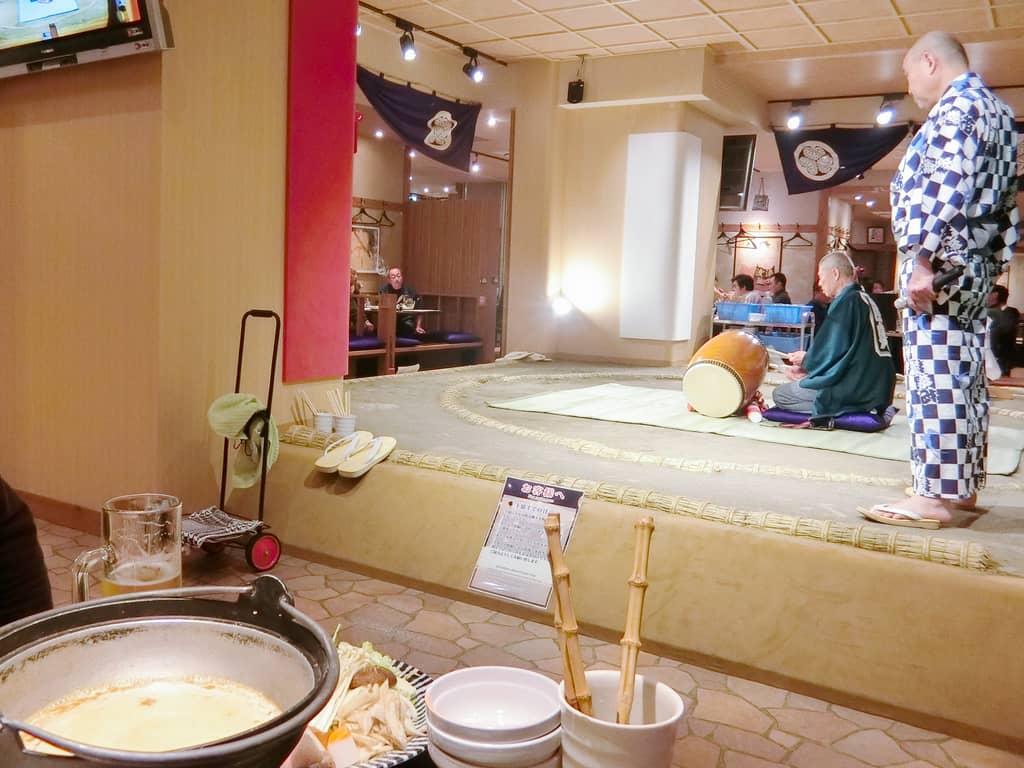
However, it’s important to note that there is no single way to season Chanko Nabe. Different stables use different bases for their nabe, including soy sauce, miso, and salt. This variety extends to the ingredients as well. While there are no strict rules, common ingredients in Chanko Nabe often include meatballs, Napa cabbage, and udon noodles, among others.
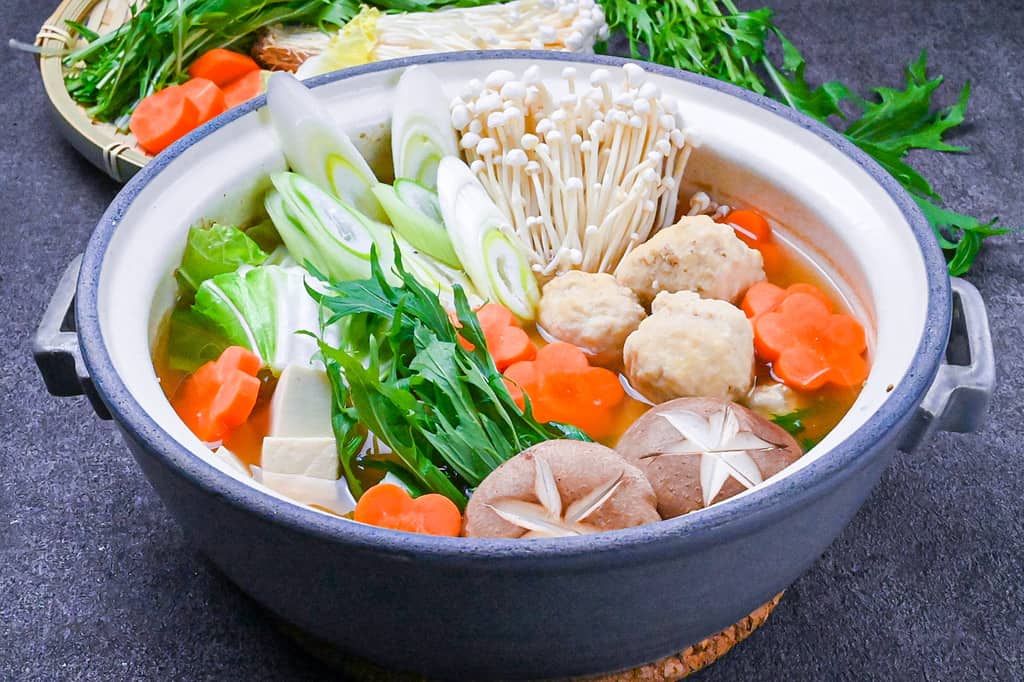
Visual Walkthrough & Tips
Here are my step-by-step instructions for how to make Chanko Nabe at home. For ingredient quantities and simplified instructions, scroll down for the Printable Recipe Card below.
If you prefer to watch the process in action, check out my YouTube video of this recipe for a complete visual walkthrough!
Mix ground chicken with awase miso paste, ginger and garlic paste in a bowl. To avoid lumps, distribute the ingredients evenly, especially the miso paste.
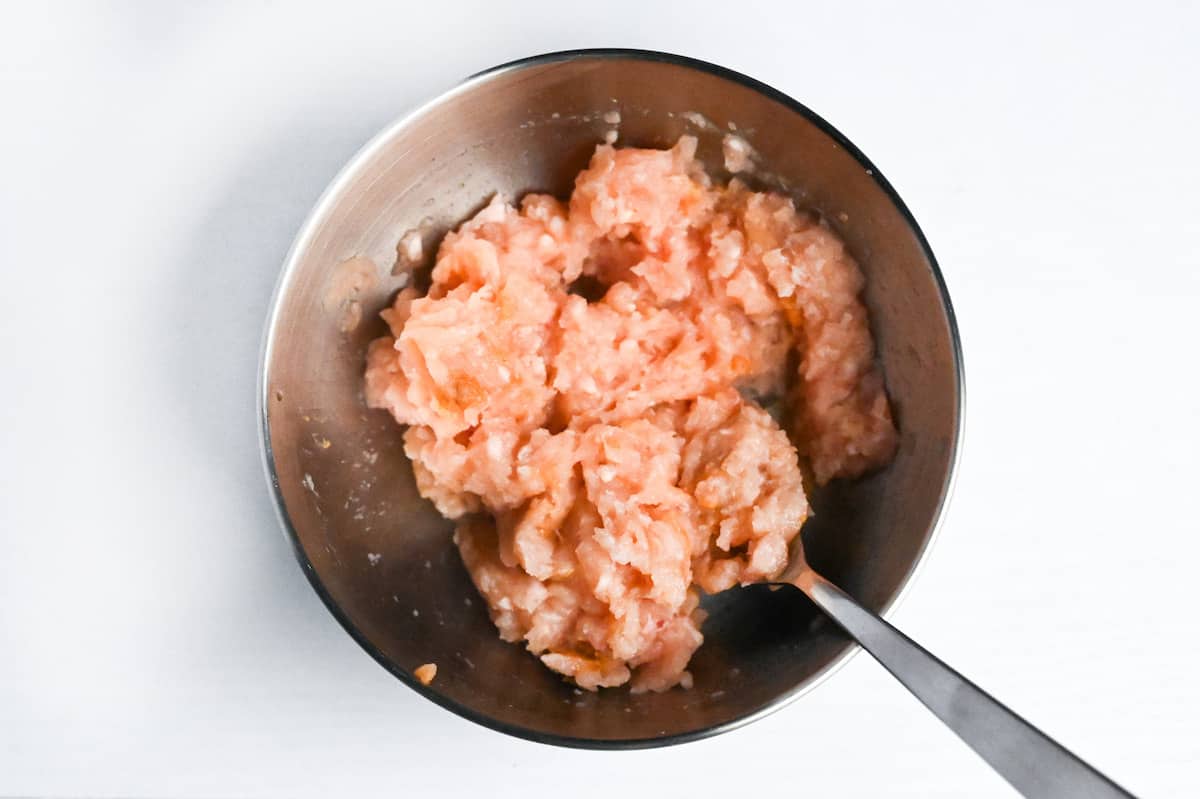
In a small separate bowl, lightly whisk a small egg. Add this egg and some cornstarch to the chicken mixture. Combine until you get a slightly sticky consistency. Cover and refrigerate until it’s time to cook.
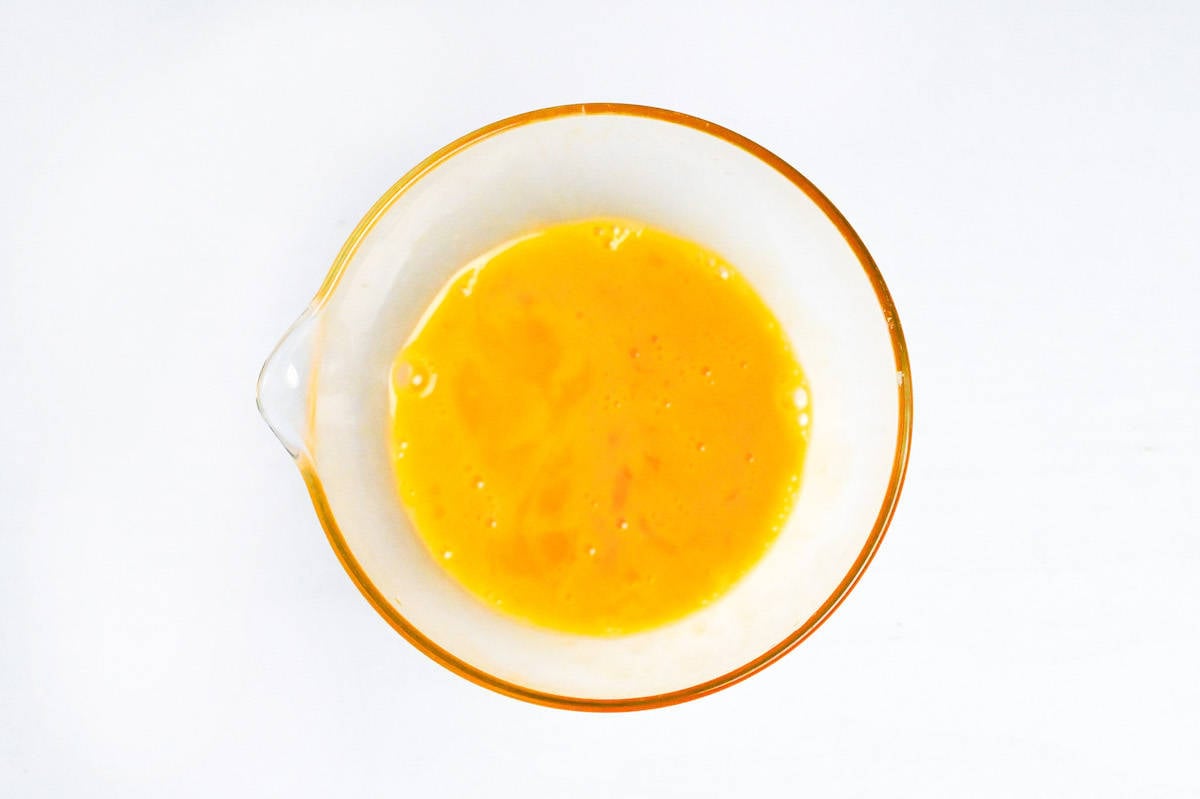
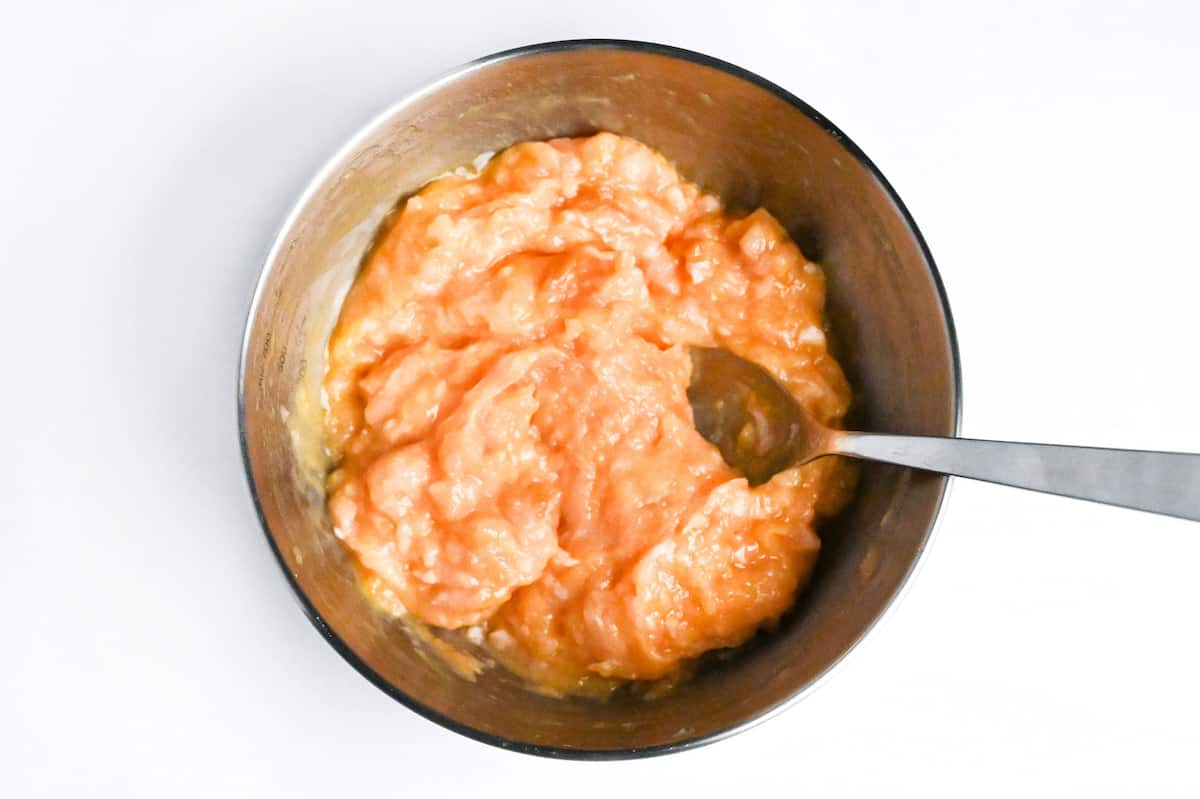
In a big pot, combine dashi stock, Chinese-style chicken bouillon powder, soy sauce, mirin, ginger and garlic paste, and ground sesame seeds. Stir well and bring to a boil over medium heat.
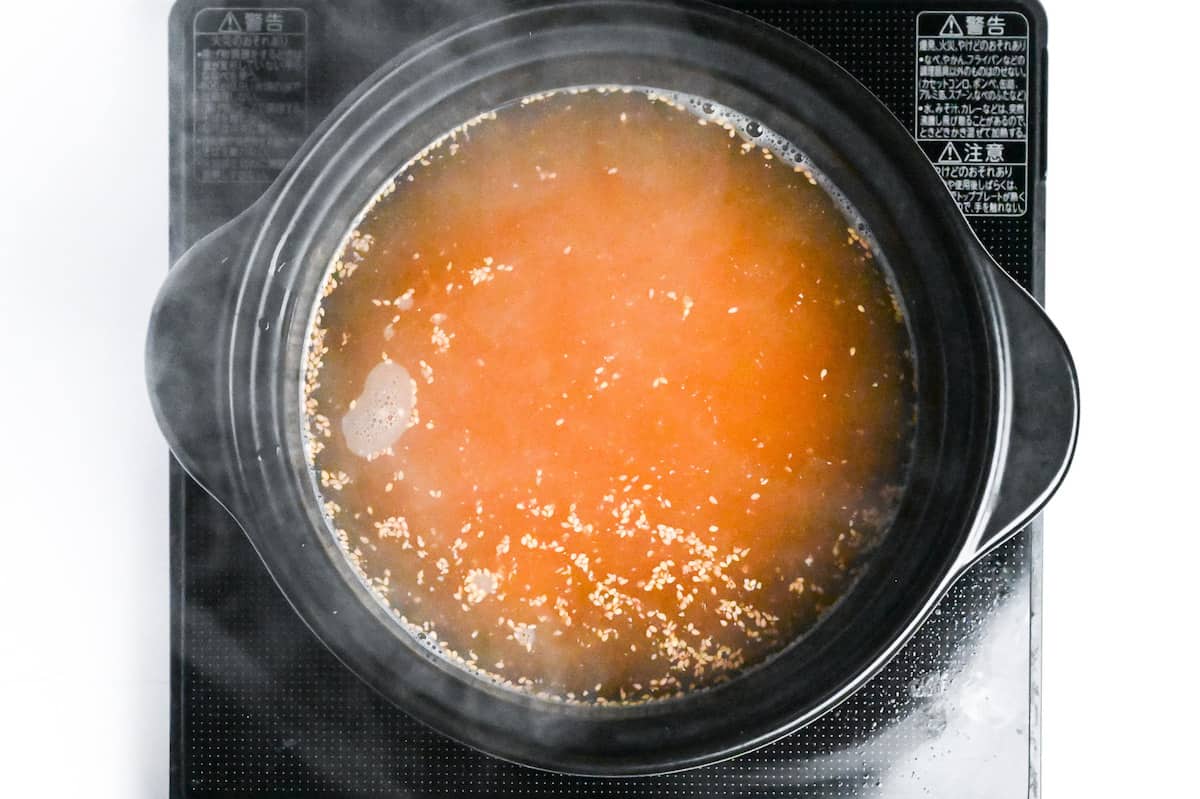
Once boiling, form the meatballs: scoop the chicken mixture with a spoon and use another spoon to slide it gently into the broth. Repeat until all the mixture is used. Cover the pot and let it cook for 3-4 minutes.
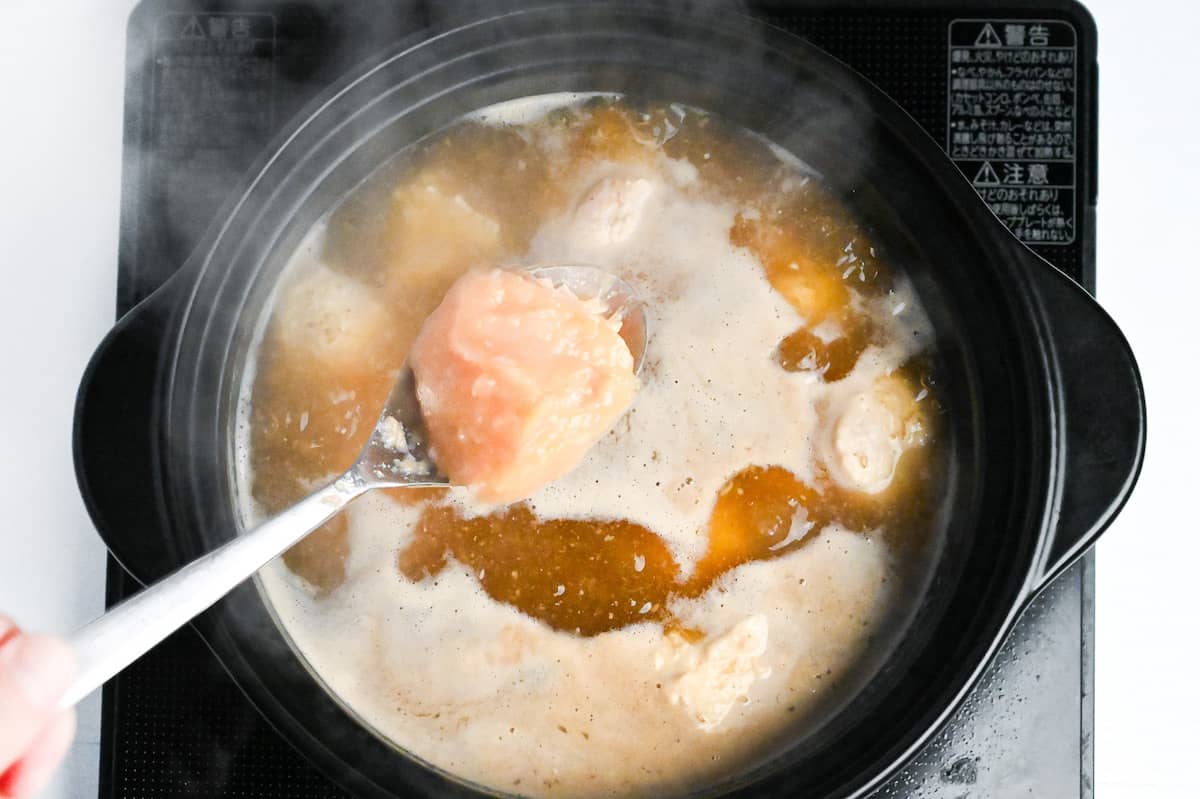
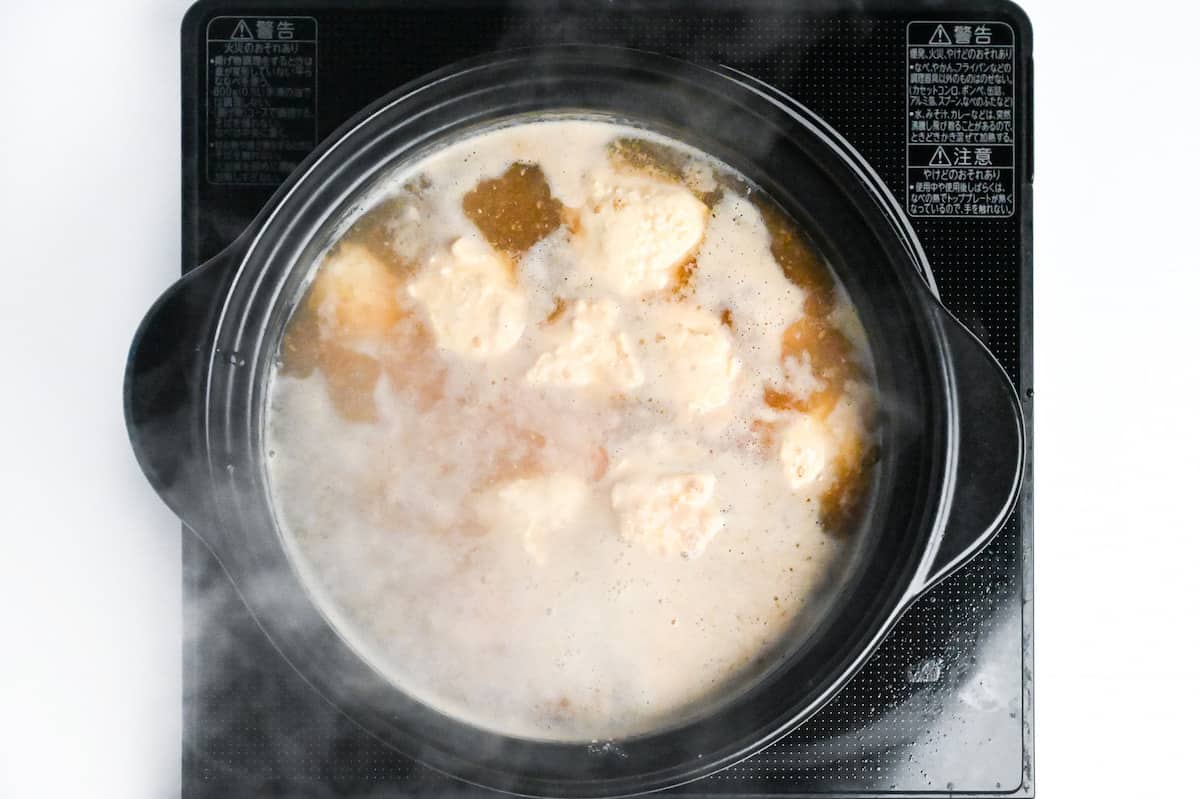
Start by adding carrots, as they take longer to cook. After a few minutes, add the rest of your vegetables and firm tofu. Simmer everything together for 10 minutes.
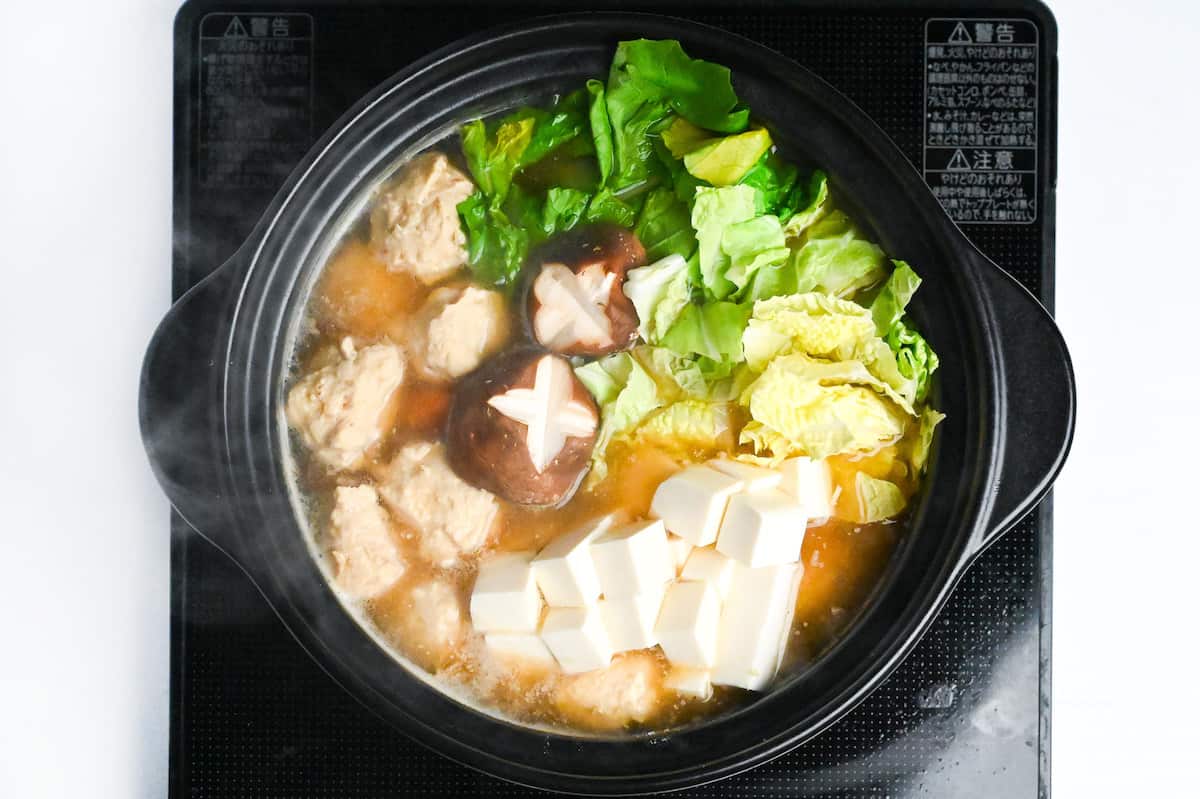
Turn off the heat. To add the miso, scoop it onto a ladle or mesh spoon and dip it into the broth. Use chopsticks or a small whisk to dissolve the miso paste gradually into the broth.
This method ensures even distribution without clumps.

Miso paste should be added as late in the process as possible, as it loses its flavor if overcooked.
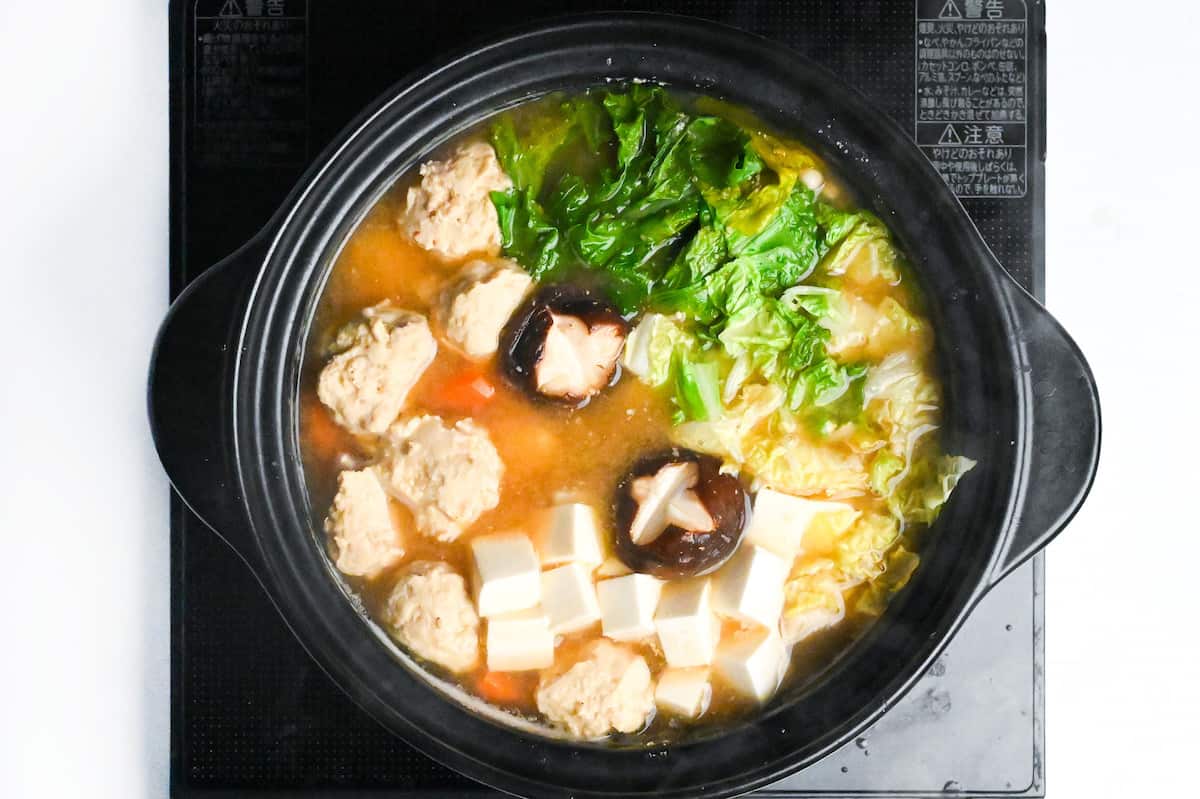
Stir well and serve the soup either as is or with a bowl of rice. This comforting dish is perfect for cold days!
Jump to Full Recipe Measurements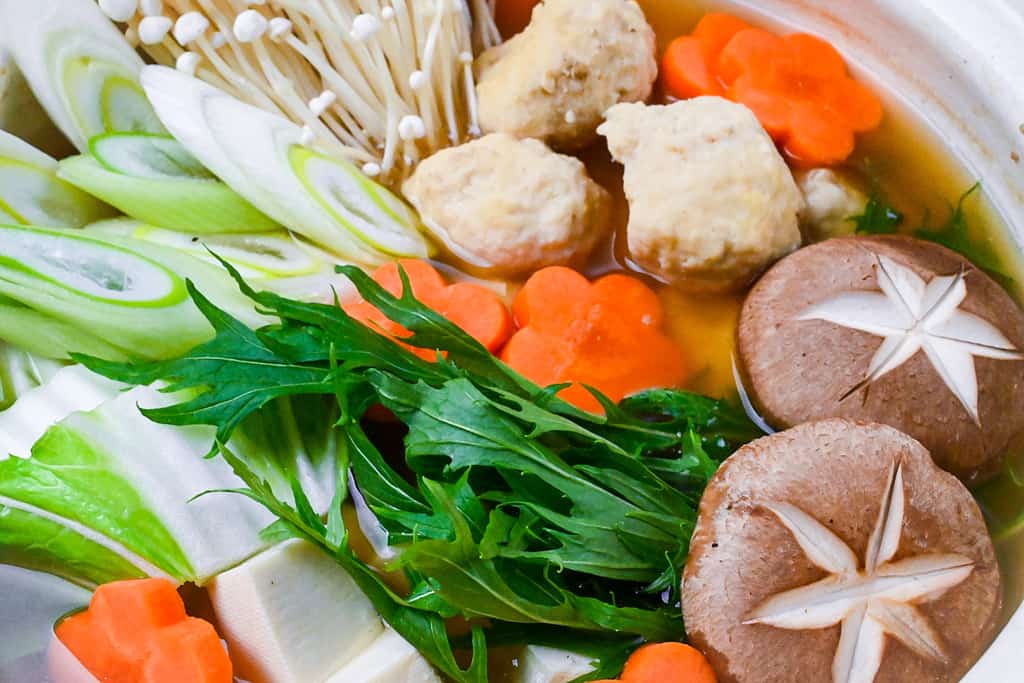
How to Store
When it comes to nabe, careful storage is key to maintaining their quality and safety. Indeed, it’s not advisable to store these leftovers at room temperature in any season due to the risk of bacterial growth.
Refrigeration is a viable option for short-term storage, but freezing is the best approach for longer preservation. Here’s a step-by-step guide:
- Remove Food Debris: Use a colander or a similar utensil to sift out any food particles from the broth. This helps in preventing spoilage and maintaining the quality of the broth.
- Reboil the Broth: Before storing, bring the broth to a boil. This step is crucial as it kills any potential bacteria that might have developed while the pot was cooling down.
- Cooling: After boiling, let the broth cool down to touch. It’s important not to freeze the broth while it’s still hot, as this can raise the temperature of your freezer, affecting other stored foods.
- Freezing: Transfer the cooled broth into a freezer-safe container. It’s a good idea to portion the broth into the amounts you’ll likely use at one time. This way, you only defrost what you need, reducing waste.
- Freeze Only the Soup: It’s generally better to freeze just the soup rather than the entire contents of the nabe. Ingredients like vegetables and proteins can change texture when frozen and reheated, so they’re best eaten fresh.
When you’re ready to enjoy your nabe again, simply defrost the broth in the refrigerator or use the defrost setting on your microwave. Then, reheat the broth and add fresh ingredients to enjoy a meal.
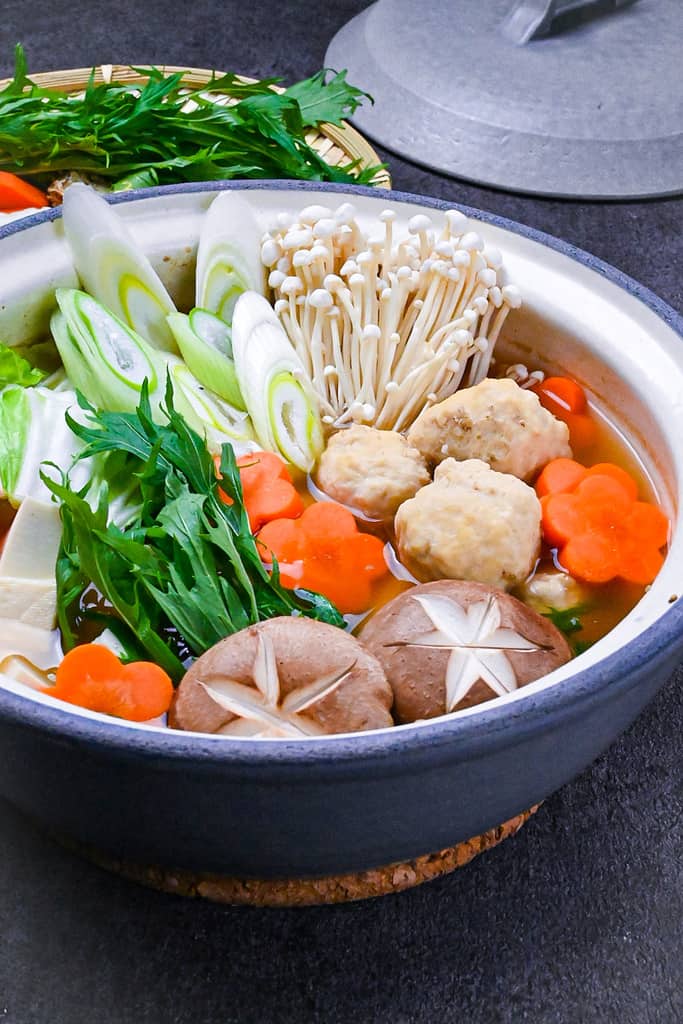
FAQ
The main reason sumo wrestlers eat Chanko Nabe are:
1. You can make it in a giant batch. Especially because so many sumo wrestlers (including trainees) share the same dish in a stable, cooking a large pot for everyone is more convenient.
2. You can consume a lot of vegetables to get strong!
3. To prevent food poisoning.
4. To save on utility bills.
They change flavor and ingredients often so they won’t get bored easily.
That’s also the beauty of Chanko Nabe! You can add what you like!
Chanko nabe isn’t really a specific recipe. It’s a term that basically means “a hot pot made by sumo wrestlers.” Each sumo stable has its own unique way of preparing it, which explains why you’ll see so many variations. There’s no one “right” way to make it, so you can pretty much customize the soup base and ingredients however you like.
You can easily adapt the recipe using locally available ingredients. Feel free to replace the napa cabbage with other cabbage varieties, use any local mushrooms instead of shiitake or enoki, or swap the chicken meatballs for sliced chicken, pork, or even seafood. The great thing about chanko nabe is how flexible it is. You can add any vegetables you like. Just remember to include some type of cabbage or water-rich vegetables, as they help create the proper amount of soup during cooking.
Yes, chanko nabe is a regular in sumo stables and is served pretty much every day. The only times it’s not served are when the wrestlers eat at restaurants or during regional tours. Back in the day, sumo stables would even travel with big pots to make chanko nabe for lunch after training. While other dishes are served alongside it, chanko nabe remains the centerpiece of a sumo wrestler’s daily meals.
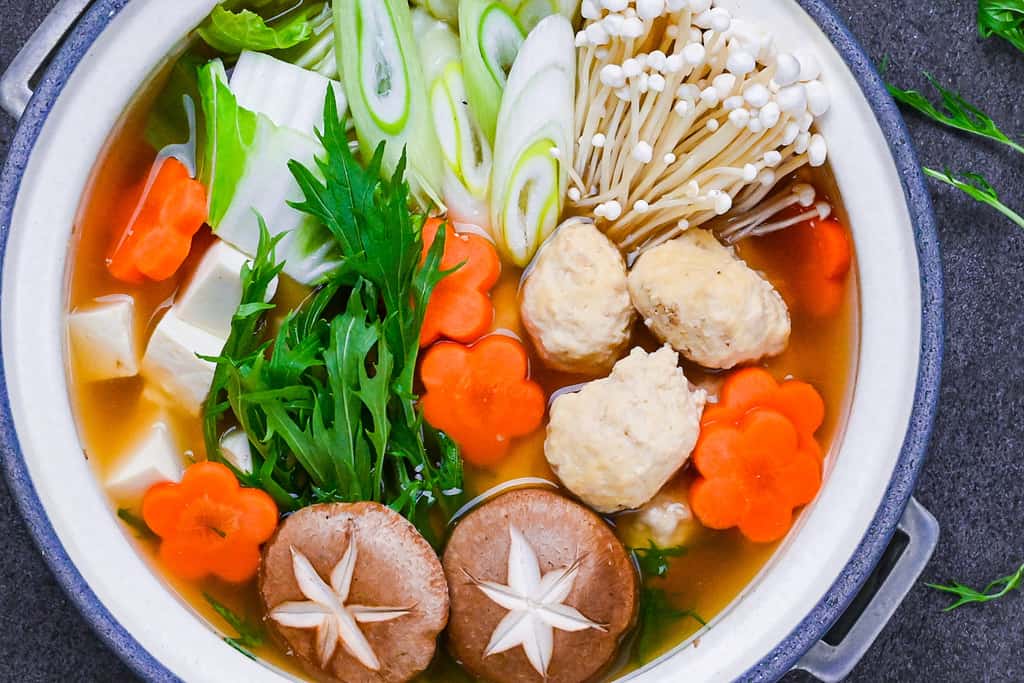
I hope you enjoy this Chanko Nabe recipe! If you try it out, I’d really appreciate it if you could spare a moment to let me know what you thought by giving a review and star rating in the comments below. It’s also helpful to share any adjustments you made to the recipe with our other readers. Thank you!
More Japanese Hotpot Recipes
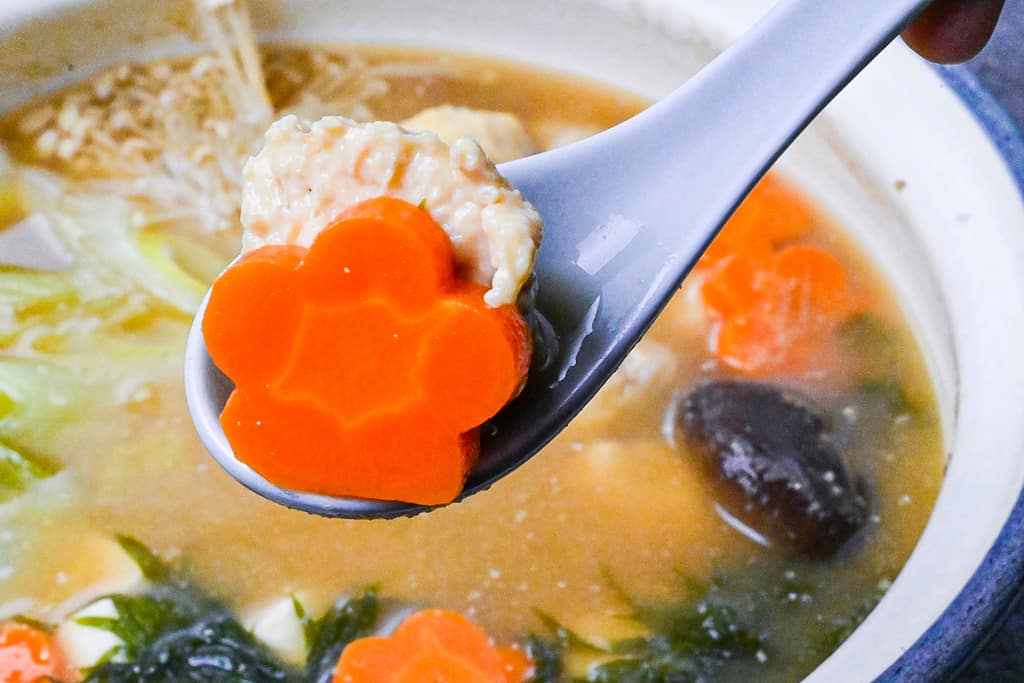
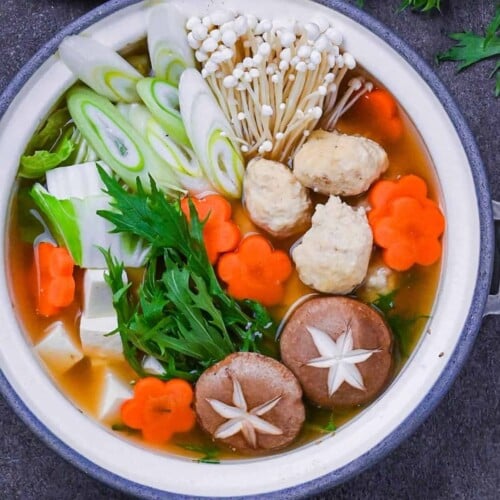
Chanko Nabe (Sumo Stew)
Ingredients
Homemade Chicken Meatballs
- 200 g ground chicken
- 1 egg
- ½ tsp Japanese soy sauce (koikuchi shoyu)
- ½ tbsp yellow miso paste (awase)
- ½ tsp grated ginger root or ginger paste
- 1 clove grated garlic or ½ tsp garlic paste for every clove
- 2 tbsp cornstarch
Broth
- 1000 ml dashi stock
- 1 ½ tbsp Chinese-style chicken bouillon powder
- 1 tbsp Japanese soy sauce (koikuchi shoyu)
- 1 tbsp mirin
- 1 tsp grated ginger root or ginger paste
- 2 cloves grated garlic or ½ tsp garlic paste for every clove
- 2 tbsp ground sesame seeds
- 2 tbsp yellow miso paste (awase)
Other Ingredients
- 1 carrot peeled and cut into thick rounds
- 1 Japanese leek (naganegi) (white part) cut into thick diagonal slices
- 1 bunch enoki mushrooms
- 2 fresh shiitake mushrooms
- ⅛ Napa cabbage roughly cut
- 150 g firm tofu cubed
- 1 bunch potherb mustard (mizuna) stems removed
My recommended brands of ingredients and seasonings can be found in my Japanese pantry guide.
Can’t find certain Japanese ingredients? See my substitution guide here.
Instructions
Homemade Chicken Meatballs
- First prepare the meatballs. Add 200 g ground chicken to a bowl along with ½ tbsp yellow miso paste (awase), 1/2 tsp Japanese soy sauce (koikuchi shoyu), ½ tsp grated ginger root and 1 clove grated garlic. Mix until the ingredients are well distributed (especially the miso, we don't want any lumps!).

- In a small separate bowl, crack 1 egg and lightly whisk.

- Add the egg and 2 tbsp cornstarch to the chicken mince, mix until you have a sticky mixture. Cover and refrigerate until it's time to cook. These can be prepared ahead of time.

Broth
- Add 1000 ml dashi stock, 1 ½ tbsp Chinese-style chicken bouillon powder, 1 tbsp Japanese soy sauce (koikuchi shoyu), 1 tbsp mirin, 1 tsp grated ginger root, 2 cloves grated garlic, and 2 tbsp ground sesame seeds to the pot. Mix well and bring to a gentle boil over a medium heat.

- Once boiling, add the meatballs by scooping the ground chicken mixture onto a spoon and using another spoon to scrape it directly into the broth (the mixture is too wet and sticky to roll into balls).

- Once the mixture is used up and all the meatballs are in the broth, cover with a lid and cook for 3 minutes.

Other ingredients
- Add 1 carrot and any root vegetables first as they take a bit longer than the other vegetables. Boil for a few minutes before adding the rest of your vegetables and 150 g firm tofu. Simmer with the lid on for 10 minutes.

- Turn off the heat and mix in 2 tbsp yellow miso paste (awase) by scooping it onto a miso strainer and dipping it in the broth. Use chopsticks or a small whisk to break up the miso paste and gradually incorporate it into the rest of the broth.

- Tip: If you don't have a miso strainer, pour a small amount of broth into a bowl and whisk to break up the miso before pouring it into the pot.

- Mix well and serve. You can enjoy this dish with rice or savor the leftover soup with udon noodles.

Video
Notes
- If you have a portable stove, you can sit it on your table and continue to cook and more add ingredients until the broth is gone.
- Note: While the nutritional information includes the full serving of broth, most people in Japan don’t actually finish all the soup.
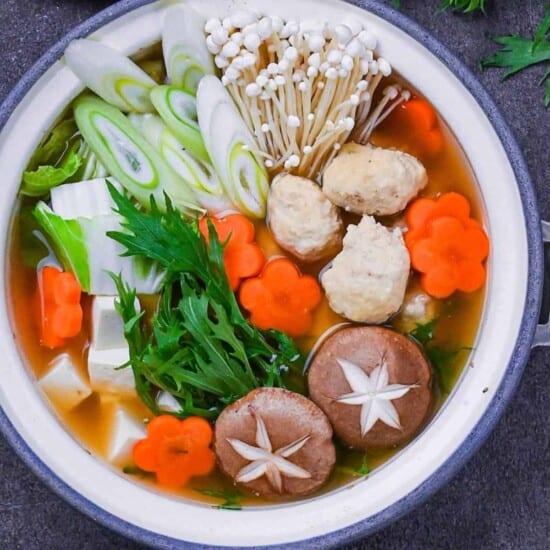




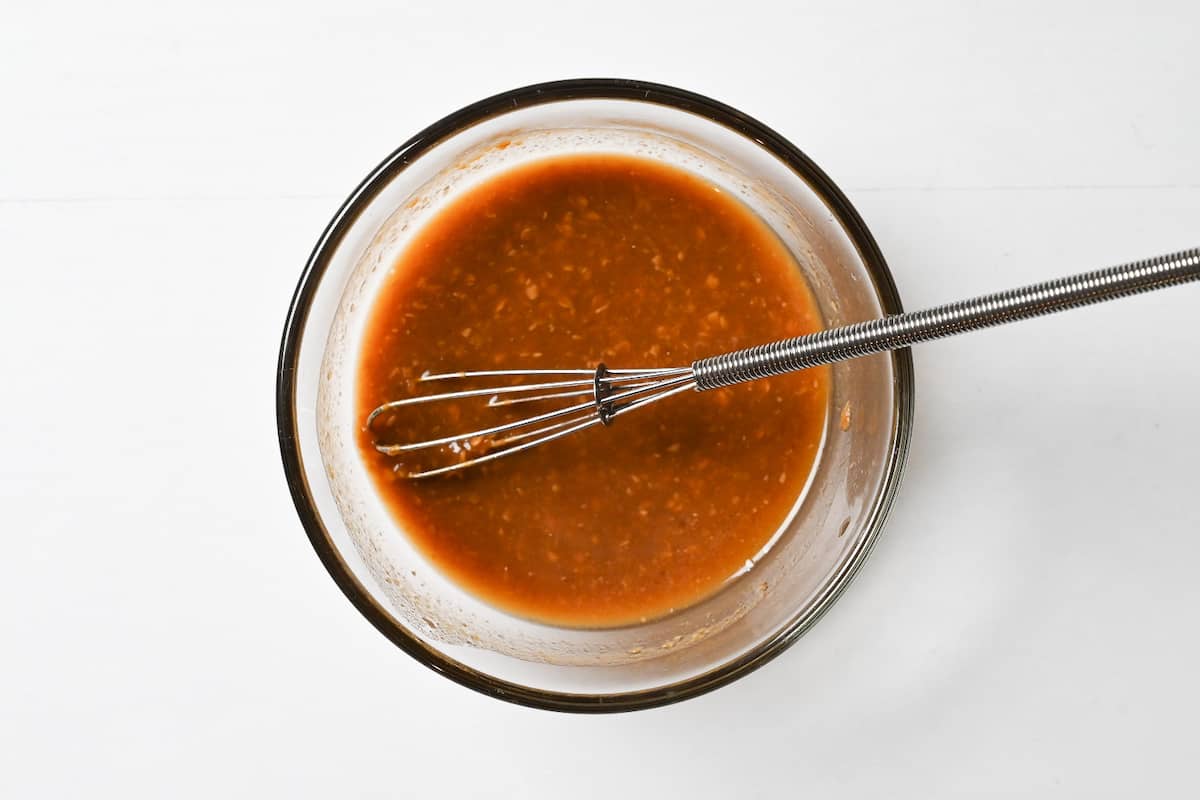
I’ve heard of this soup, but didn’t pay any attention to the ingredients. As it turns out, I’ve been eating it for the last couple of weeks! I’ve been cutting on carbs, and was looking for something light for breakfast. It’s just broth, sometimes plus gochujang, tofu, musrooms, and vegetables. It’s very filling, no carbs needed.
I will try the meatballs next time. Thanks for the recipe.
I like your idea of adding gochujang, I’ll have to try that next time! The meatballs are one of my favourite parts of this recipe, I hope you enjoy them too. Thank you for the comment and rating 🙂